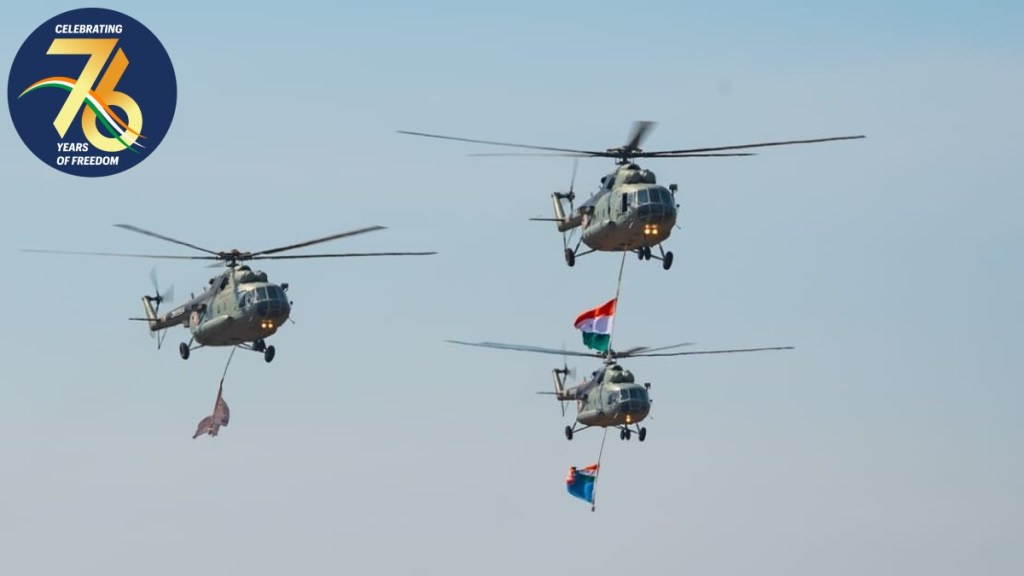The Indian Air Force (IAF) maintains unwavering readiness in Ladakh, three years post the Galwan clash, with fully loaded fighters, drones, and missiles, epitomizing its rapid response capabilities.
During the Galwan Valley clash in 2020, according to sources in the defence and security establishment, “the IAF transported over 68,000 troops, around 90 tanks, and more than 300 armored personnel carriers into the frigid terrain of Ladakh.”
“Even now, the IAF maintains an “operational ready format” in the region, signifying that fighter aircraft are fully equipped and prepared for takeoff within five to seven minutes when the need arises. This state of readiness involves fueling the aircraft and loading live munitions onboard,” sources quoted above said.
In recognition of the urgency of response, the IAF adopts a proactive stance by sustaining Combat Air Patrol (CAP) near the Line of Actual Control (LAC) shared with China. This approach serves as a deterrent to convey that any aggressive action will face a swift and robust response. It’s noteworthy that even a delay of five to seven minutes can be deemed substantial in certain situations.
Transport and Helicopter Fleet
The transport fleet has been fully deployed by the IAF. The fleet includes various aircraft types, such as the AN-32s, AVROs, IL-76 heavy transports, and IL-78 mid-air refuelling tankers from Russia. Additionally, the IAF operates 12 C-130J Super Hercules special mission aircraft and 11 C-17 Globemaster strategic airlift aircraft.
The buildup of fighter aircraft involves the forward deployment of Rafales, SU-30MKIs, and Mig-29s. The IAF has airfields in Leh and Thoise in Ladakh, with ongoing efforts to extend the runway at the Nyoma advanced landing ground to accommodate fighter jets. The intention is to establish an offensive posture for dealing with potential adversary actions.
According to sources, the Galwan Valley incident in June 2020 resulted in the loss of 20 Indian soldiers and multiple injuries on both sides. “The IAF’s instrumental role in rapidly transporting men and equipment in the aftermath was pivotal, primarily attributed to its diverse transport fleet. This fleet, encompassing aircraft like the Russian AN 32s, IL76s, American C-17s, and C-130Js, along with helicopters such as the Russian Mi17s and American Chinooks, facilitated swift deployments and last-mile connectivity to remote forward posts,” they highlighted.
IAF & Indian Army
The logistical feat included transporting multiple divisions of the Indian Army—over 68,000 troops, 330 BMPs, and 90 tanks—totaling around 9,000 tonnes of equipment to Ladakh. Although subsequent efforts involved overland routes due to evolving requirements, the initial airborne transport played a critical role in the rapid buildup.
“The IAF focuses on strengthening the air defence network, which includes surface-to-air guided weapons and radar systems. These components are transported to forward locations, even during harsh winters with extreme temperatures and windy conditions,” sources said.
An example of the IAF’s challenges and collaboration with the Indian Army is highlighted by the construction of a pontoon bridge across the Indus River. This bridge facilitated the quick transportation of heavy radars, a task that would have taken significantly longer using existing routes.
Strategic Challenges
Strategically, the IAF faced a multi-faceted task. It aimed to bolster India’s military posture by promptly introducing platforms, troops, and weaponry to deter potential threats. Additionally, the IAF focused on sustaining credible forces, monitoring deployed units, and tracking adversarial build-up.
Maintaining this credible deterrence was achieved through a combination of deploying fighter aircraft, utilizing specialized radars, and employing air defence systems. By adopting both offensive and defensive strategies, the IAF countered China’s “anti-access area denial (A2AD)” strategy, which sought to hinder enemy mobility through an array of surface-to-air missile (SAM) sites, long-range radars, and substantial ground forces.
Combat Aircraft & Cutting Edge Technology
A significant milestone was the operationalization of the Rafale fighter jets, inducted in July 2020. To expedite deployment, the IAF urgently procured the French HAMMER air-to-ground precision-guided weapon system. The deployed fighters, including Rafale, Su30 MKI, upgraded MiG 29 UPGs, and Jaguars, were positioned for both offensive and surveillance purposes.
Drones Used
Utilizing cutting-edge technology, Su 30 MKI was equipped with specialized equipment capable of capturing images of enemy positions up to 70-80 kilometers deep into the territory. Furthermore, the IAF employed drones for visual and electronic surveillance, amplifying their situational awareness.
A noteworthy addition was the Heron Mk II drones, acquired from Israel through emergency procurement, armed with exceptional surveillance and electronic intelligence capabilities extending over 30 hours. These drones have the potential to be weaponized if required, highlighting the IAF’s adaptability and innovative approach to addressing evolving challenges.
The Galwan incident prompted an extraordinary response from the IAF, with their unwavering dedication and strategic adaptations ensuring that Ladakh remains in an “operational ready format.” This posture, characterized by swift response times, modern technology, and a vigilant stance, underlines the IAF’s commitment to safeguarding national security and deterring potential adversaries in the region.

